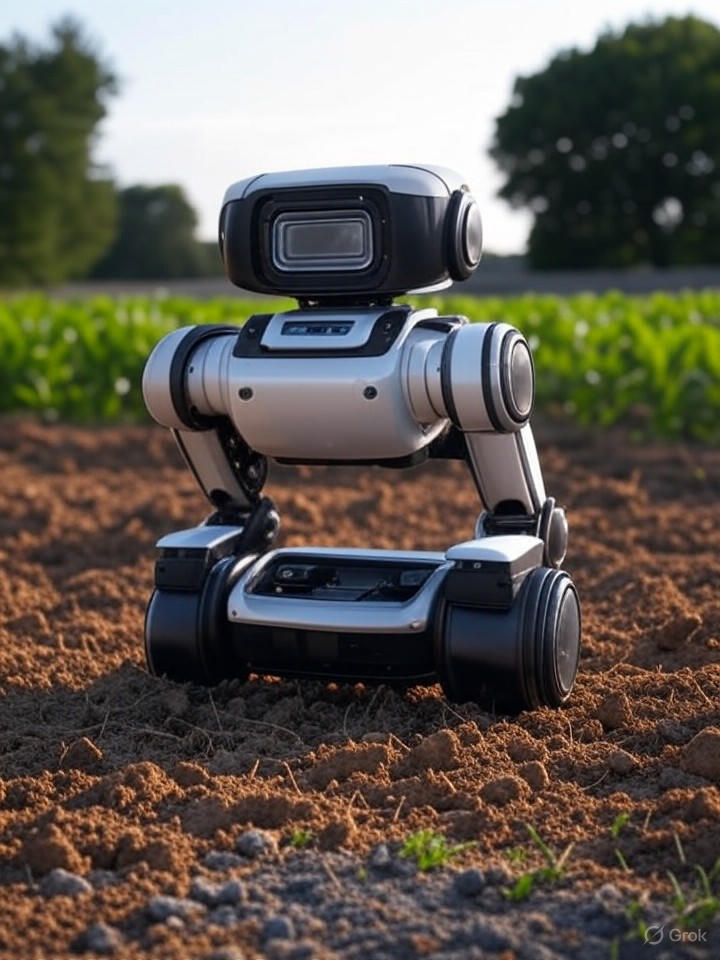Revolutionizing Human-Wildlife Coexistence
In the heart of Sweden’s burgeoning tech scene, Flox Robotics is emerging as a pioneer in AI-driven solutions for wildlife management. Founded with a vision to foster harmonious interactions between humans and animals, the company develops autonomous technologies that deter wildlife from high-risk areas like farms, airports, and railways without resorting to fences or lethal methods. By leveraging artificial intelligence, Flox’s systems detect animals in real-time and deploy species-specific audio signals to gently guide them away, preserving biodiversity while mitigating economic losses from conflicts.
This approach addresses a growing global challenge: as urban expansion encroaches on natural habitats, incidents of wildlife interfering with human infrastructure have surged, leading to billions in damages annually. Flox’s “digital sheepdog,” as it’s often called, represents a shift toward ethical, tech-enabled coexistence, drawing on machine learning to interpret animal behavior and respond accordingly.
Securing Seed Funding Amid Rising Demand
The startup recently secured nearly €1 million in seed funding, a milestone that underscores investor confidence in its innovative model. According to a report from EU-Startups, this round will fuel Flox’s expansion, enabling scaled production and broader market penetration. CEO Sara Nozkova highlighted the infusion as providing the “muscles to scale up the company,” allowing for enhanced R&D and international outreach.
Complementing this, posts on X (formerly Twitter) from industry observers, such as those shared by Di Digital, confirm the funding at around 10 million SEK, aligning with the euro equivalent and emphasizing Flox’s potential to communicate with animals in their “own language” via AI. This capital comes at a pivotal time, as global awareness of wildlife conservation intersects with advancements in cleantech.
Technological Innovations and Field Trials
At the core of Flox’s offerings is an AI system that integrates cameras, sensors, and audio deterrents. In aviation, for instance, the technology has achieved a 100% bird-strike deterrence rate at ten Swedish airports, as detailed in a press release covered by CBS42. The system identifies birds in flight paths and emits targeted sounds to redirect them, drastically reducing collision risks.
On the ground, Flox is partnering with rail giant Alstom for trials in Sweden, funded by a SEK 3.3 million grant from Vinnova, Sweden’s innovation agency. As reported by Yahoo Finance, these field tests involve onboard train systems that detect and deter animals from tracks, potentially cutting accident rates and protecting species like moose and deer. Such collaborations highlight Flox’s adaptability across sectors, from agriculture to transportation.
Global Expansion and Market Impact
Looking ahead to 2025, Flox made waves with its U.S. debut in Half Moon Bay, California, co-hosted by Coastside Venture Studio, where it showcased its tech to potential partners. This event, noted in various web sources including Swedish Cleantech, positions Flox for entry into North American markets, where wildlife-vehicle collisions cost an estimated $8 billion yearly.
Industry insiders see Flox’s innovations as a blueprint for sustainable tech, blending AI with ecology. With funding secured and trials proving efficacy, the company is poised to influence policy on wildlife management worldwide. However, challenges remain, such as ensuring AI accuracy in diverse environments and navigating regulatory hurdles for autonomous systems.
Future Prospects in Ethical AI Applications
As Flox scales, its emphasis on non-invasive deterrence could inspire similar ventures, reducing reliance on traditional barriers. Backed by government grants and private investment, the startup’s trajectory suggests a broader adoption of AI for environmental harmony. Nozkova’s team plans to integrate more advanced learning algorithms, potentially expanding to marine and urban settings.
Ultimately, Flox embodies a forward-thinking ethos: technology not as a divider, but as a bridge between human progress and natural preservation. With its recent funding boost, the company is well-equipped to lead this charge, promising safer infrastructures and thriving ecosystems in the years ahead.




 WebProNews is an iEntry Publication
WebProNews is an iEntry Publication